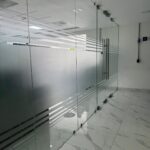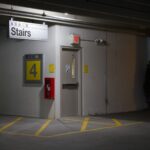 As I said in my previous post about fire door FAQs, I will be posting more groups of FAQs in the coming months, to try to fill in some gaps where there is still confusion. In this post I am answering a few common questions on controlled egress doors in health care facilities.
As I said in my previous post about fire door FAQs, I will be posting more groups of FAQs in the coming months, to try to fill in some gaps where there is still confusion. In this post I am answering a few common questions on controlled egress doors in health care facilities.
Do the model code sections on controlled egress really allow exit doors to be locked, preventing egress?
The short answer is – yes, if all of the criteria in the adopted codes are met. For some patients, containment is necessary in order to keep them safe. For example, if a memory care patient leaves a facility unaccompanied, it can lead to injury or even death (this has happened more than once). The requirements of the model codes help to ensure that there is a balance of life safety along with the security provided by controlled egress doors.
Where are controlled egress locks allowed?
The model codes allow controlled egress locks on doors serving some types of health care units. The key is that the patients within these units require containment for their safety or security. Memory care units are a common location, as well as maternity, pediatrics, behavioral health, and in some cases, the emergency department. The types of units are not specifically called out in the model codes, so it is up to the Authority Having Jurisdiction (AHJ) to decide where controlled egress locks are acceptable.
If the exit doors serving these units are locked, how do building occupants evacuate in an emergency?
There are several methods of unlocking the doors for egress that are mandated by the model codes. Clinical staff members must carry the keys or credentials to unlock the doors if evacuation is needed. Automatic release methods are required as well, for example, controlled egress doors must unlock automatically for egress upon activation of the fire alarm or sprinkler system, upon power failure, and in some cases via a remote release switch. Both sets of model codes allow some of the automatic release methods to be omitted on doors serving areas where specialized security measures are needed, including behavioral health units and maternity areas where listed child abduction systems are in use.
What is the difference between a delayed egress lock and a controlled egress lock?
Delayed egress locks allow egress 15 seconds after someone attempts to exit (or 30 seconds if approved by the AHJ). A controlled egress lock does not release automatically after an attempt to exit. Although there are some similarities – both locks are required to allow immediate egress (with some exceptions) upon fire alarm or sprinkler activation and upon power failure – the way these locks function under normal operation is different. Delayed egress locks allow free egress after 15 seconds – controlled egress locks require intervention from staff or the fire protection system. Controlled egress locks are not required to have an audible alarm or signage – both are requirements for doors with delayed egress locks.
What type of hardware is used in a controlled egress system?
Typically, fail safe hardware is required so that the doors will unlock and allow immediate egress when power is cut. Electromagnetic locks are often used on controlled egress doors, and would not be subject to the code sections that normally apply to mag-locks. Some delayed egress devices, like the Von Duprin Chexit, can be supplied with “infinite delay”, so instead of releasing 15 seconds after an attempt to exit, the lock does not release until there is an emergency. In some cases, electromechanical mortise locks or cylindrical locks are used on controlled egress doors. The model codes require hardware used in a controlled egress system to be listed to UL 294 – Standard for Access Control System Units (the 2024 codes will allow either the UL 294 or UL 1034 listings for these systems).
For more information, refer to this article comparing the model code requirements for controlled egress locking systems, or watch this video on delayed egress vs. controlled egress locks. There is also a webinar addressing this topic on the webinars page of iDigHardware. And if you have any questions you’d like to have answered as part of this FAQ series, feel free to leave them in the Comment box.
You need to login or register to bookmark/favorite this content.





Leave A Comment